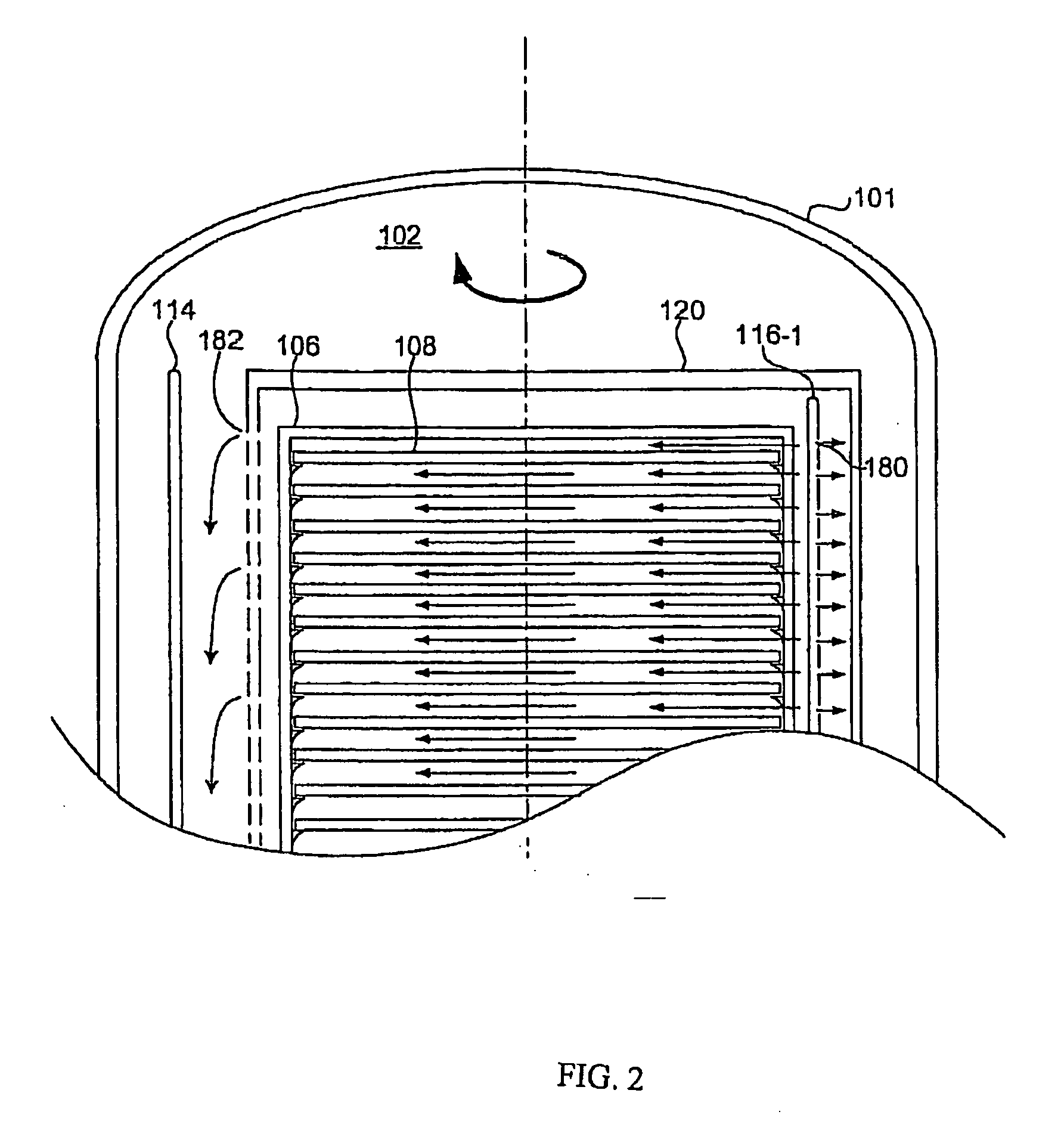Uniform batch film deposition process and films so produced
- Summary
- Abstract
- Description
- Claims
- Application Information
AI Technical Summary
Benefits of technology
Problems solved by technology
Method used
Image
Examples
example 1
[0086] A batch of 20 wafers was dispersed along a 120 wafer carrier with substrate blanks filling the unused 100 positions. After stabilizing a wafer substrate temperature and an inert dinitrogen atmosphere, trisilylamine and ammonia gas are introduced into the reactor at flow rates of 15 and 225 sccm while the reactor total pressure is maintained at 3 Torr with a controlled flow of argon gas. The deposition is allowed to proceed for 30 minutes at a reaction temperature of 515° C. A deposition rate of 1.8 Angstroms per minute is noted. WIW uniformity for the resultant silicon nitride film is 2.3 thickness percent (three sigma) while WTW thickness variation is 2.6 percent. Auger spectroscopy indicated the resultant deposited layer of material to be devoid of carbon and chlorine and having less than 8 atomic percent substitution hydrogen for the silicon counterions.
examples 2-6
[0087] The process of Example 1 is repeated with a change in wafer substrate temperature. Comparable uniformity to that of Example 1 is noted while variations in deposition rate as a function of temperature are provided in Table 2 along with the comparative temperature and deposition rates for prior art precursors. Auger spectroscopy indicated the resultant deposited layer of material to be devoid of carbon and chlorine and having less than 10 atomic percent substitution hydrogen for the silicon counterions.
TABLE 2Batch SiN Layer Deposition as a Function of TemperatureSubstrate Temp.Deposition RateExamplePrecursor(° C.)(Å / mm)1trisilylamine / NH35151.82trisilylamine / NH35254.03trisilylamine / NH35409.34trisilylamine / NH355010.35trisilylamine / NH3575136trisilylamine / NH360018Comp. Adichlorosilane / NH375017.3Comp. Bbis t-butylamino57010.0silane / NH3
example 7
[0088] A low temperature oxide material layer is deposited with the reactor according to FIG. 1 with the reactor maintained at a total pressure of 7 Torr with dinitrogen as an inert gas, trisilylamine and oxygen being metered into the reactor at rates of 11 and 200 sccm, respectively. The nitrogen flow rate is approximately 500 sccm. The deposition rate and WIW nonuniformity (one sigma) as a function of deposition temperature between 200°0 and 450° C. is provided in FIG. 6. WTW variation is less than 3%. Auger spectroscopy indicated the resultant deposited layer of material to be devoid of carbon and chlorine and having less than 10 atomic percent substitution hydrogen for the silicon counterions.
PUM
| Property | Measurement | Unit |
|---|---|---|
| Fraction | aaaaa | aaaaa |
| Pressure | aaaaa | aaaaa |
| Pressure | aaaaa | aaaaa |
Abstract
Description
Claims
Application Information
 Login to View More
Login to View More - R&D
- Intellectual Property
- Life Sciences
- Materials
- Tech Scout
- Unparalleled Data Quality
- Higher Quality Content
- 60% Fewer Hallucinations
Browse by: Latest US Patents, China's latest patents, Technical Efficacy Thesaurus, Application Domain, Technology Topic, Popular Technical Reports.
© 2025 PatSnap. All rights reserved.Legal|Privacy policy|Modern Slavery Act Transparency Statement|Sitemap|About US| Contact US: help@patsnap.com



